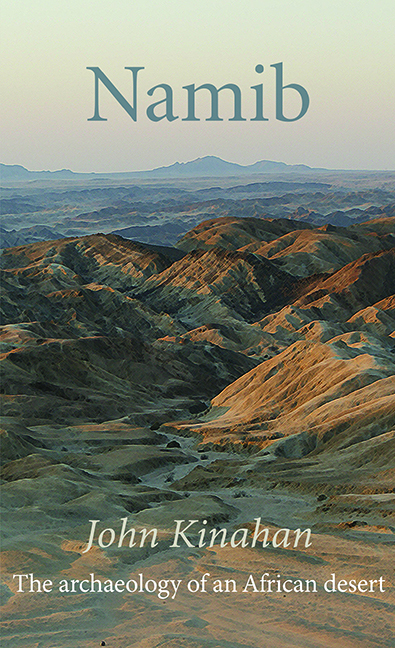Book contents
- Frontmatter
- Contents
- Miscellaneous Frontmatter
- Map
- Dedication
- Preface
- Acknowledgements
- Notes to the Reader
- List of Abbreviations
- List of Figures and Tables
- 1 Introduction
- 2 First Footsteps
- 3 Time’s Arrow
- 4 Mountain Refuge
- 5 Elephants and Rain
- 6 Desert Garden
- 7 The Family Herd
- 8 The Black Swan
- 9 Men in Hats
- 10 The Death of Memory
- Epilogue
- Glossary
- Bibliography
- Index
- Frontmatter
- Contents
- Miscellaneous Frontmatter
- Map
- Dedication
- Preface
- Acknowledgements
- Notes to the Reader
- List of Abbreviations
- List of Figures and Tables
- 1 Introduction
- 2 First Footsteps
- 3 Time’s Arrow
- 4 Mountain Refuge
- 5 Elephants and Rain
- 6 Desert Garden
- 7 The Family Herd
- 8 The Black Swan
- 9 Men in Hats
- 10 The Death of Memory
- Epilogue
- Glossary
- Bibliography
- Index
Summary
At its simplest, this is a story of human survivalover the last one million years in one of the most hostile environments on Earth. The earliest evidence of human occupation in the Namib Desert is scanty but it speaks across the ages, of small hunter-gatherer bands venturing deep into this almost lunar landscape, in search of animal prey dependent on the same few sources of water. Over time, with occasional pulses of population expansion from better watered parts of the subcontinent, our distant ancestors left an extraordinarily rich body of evidence in the form of stone tools and the remains of the animals they hunted.
Complex systems of migration and intricate social networks developed here, under conditions that tried the limits of human endurance. Depictions of rain-making rituals appeared in remote rock art sites, and specialist shamans travelled over the landscape, officiating at secluded ceremonies dedicated to the initiation of young men and women into the roles and responsibilities of adulthood. Gradually, hunter-gatherer communities adopted pottery and livestock from farming communities on the margins of the desert and became successful pastoralists. Then, contact and trade with visiting seafarers in the last few centuries brought a floodtide of conquest, dispossession and genocide in the early colonial era.
To compose a nuanced account of these developments I have departed from the conventional approach of southern African archaeology in which human history is understood as a series of broad, clearly defined evolutionary steps, or stadia. Instead, I have adopted as a general framework the concept of the adaptive cycle, an approach based on a premise that is particularly appropriate to desert conditions. This is the notion of resilience in socio-ecological systems, combining an inherent flexibility and adaptive potential. In terms of the adaptive cycle, the archaeological sequence of the Namib Desert is therefore a history of perpetual transition, of shifting and temporary states of balance.
Just as in nature, where there is no perfect adaptation, our own survival emerges from a series of ever-changing responses and solutions, with Man as the tireless bricoleur. The natural environment sets limits of permission and constraint for human adaptation, but it is not possible to simply infer from the conditions of Nature patterns in the evolution of human culture.
- Type
- Chapter
- Information
- NamibThe Archaeology of an African Desert, pp. ix - xiiPublisher: Boydell & BrewerPrint publication year: 2022



